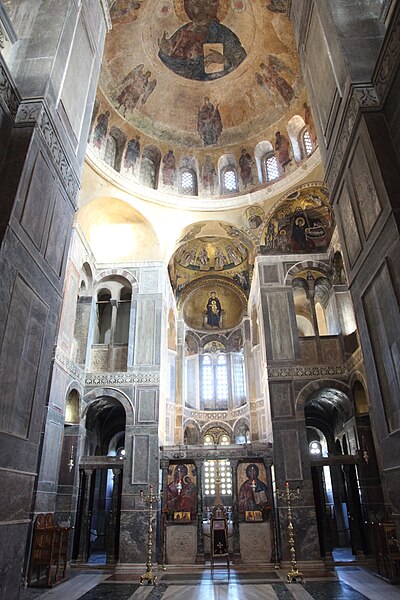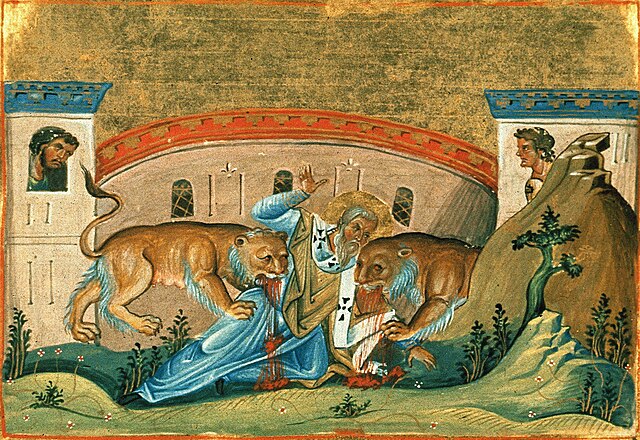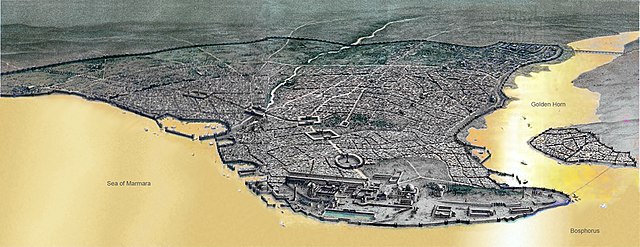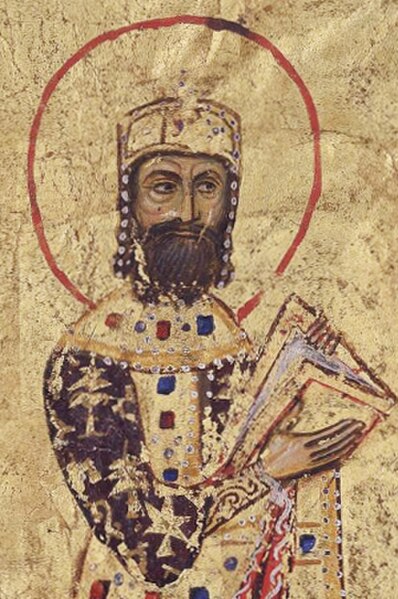Macedonian Renaissance is a historiographical term used for the blossoming of Byzantine culture in the 9th–11th centuries, under the eponymous Macedonian dynasty (867–1056), following the upheavals and transformations of the 7th–8th centuries, also known as the "Byzantine Dark Ages". The period is also known as the era of Byzantine encyclopedism, because of the attempts to systematically organize and codify knowledge, exemplified by the works of the scholar-emperor Constantine VII Porphyrogennetos.
Virgin Mary with Christ mosaic, Hagia Sophia
Interior of Hosios Loukas
Illustration of Ignatius of Antioch being martyred.
The Byzantine Empire, also referred to as the Eastern Roman Empire, was the continuation of the Roman Empire centered in Constantinople during Late Antiquity and the Middle Ages. The eastern half of the Empire survived the conditions that caused the fall of the West in the 5th century AD, and continued to exist until the fall of Constantinople to the Ottoman Empire in 1453. During most of its existence, the empire remained the most powerful economic, cultural, and military force in the Mediterranean world. The term "Byzantine Empire" was only coined following the empire's demise; its citizens referred to the polity as the "Roman Empire" and to themselves as "Romans". Due to the imperial seat's move from Rome to Byzantium, the adoption of state Christianity, and the predominance of Greek instead of Latin, modern historians continue to make a distinction between the earlier Roman Empire and the later Byzantine Empire.
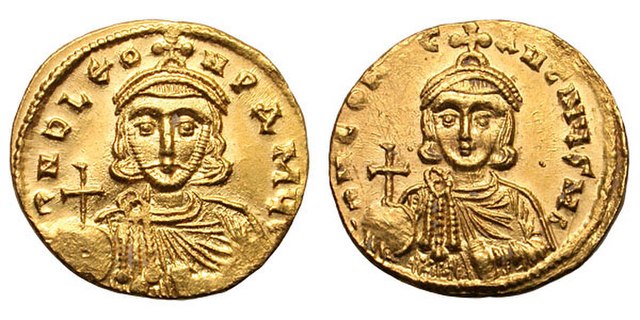
Gold solidus of Leo III (left), and his son and heir, Constantine V (right)
Constantinople was the largest and wealthiest city in Europe throughout late antiquity and most of the Middle Ages until the Fourth Crusade in 1204.
The seizure of Edessa (1031) by the Byzantines under George Maniakes and the counterattack by the Seljuk Turks
Alexios I, founder of the Komnenos dynasty


